If you want to maximize your productivity, you need a to-do app. Offloading task management from your brain lets you focus your mental energy on what's important: the task you're working on. But finding a to-do app that fits your style can be tough.
There are literally hundreds of to-do apps on Google Play, but some are too basic, too bloated, too slow, too clunky, too ugly, or too pricey. However, TickTick for Android pretty much resolves all these issues.
So, let's look at the reasons why we think TickTick is among the very best Android to-do apps.
Download: TickTick (Free, in-app purchases available)
1. Interface
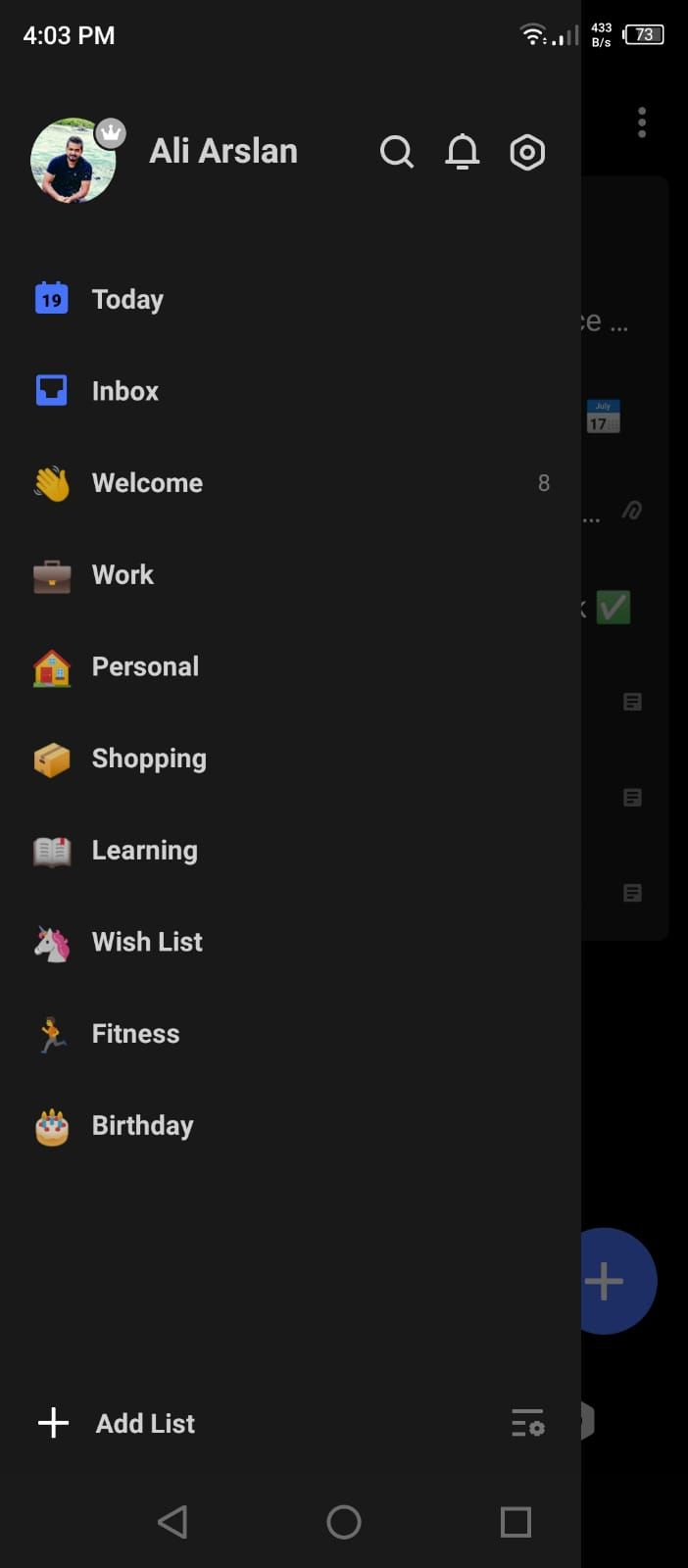
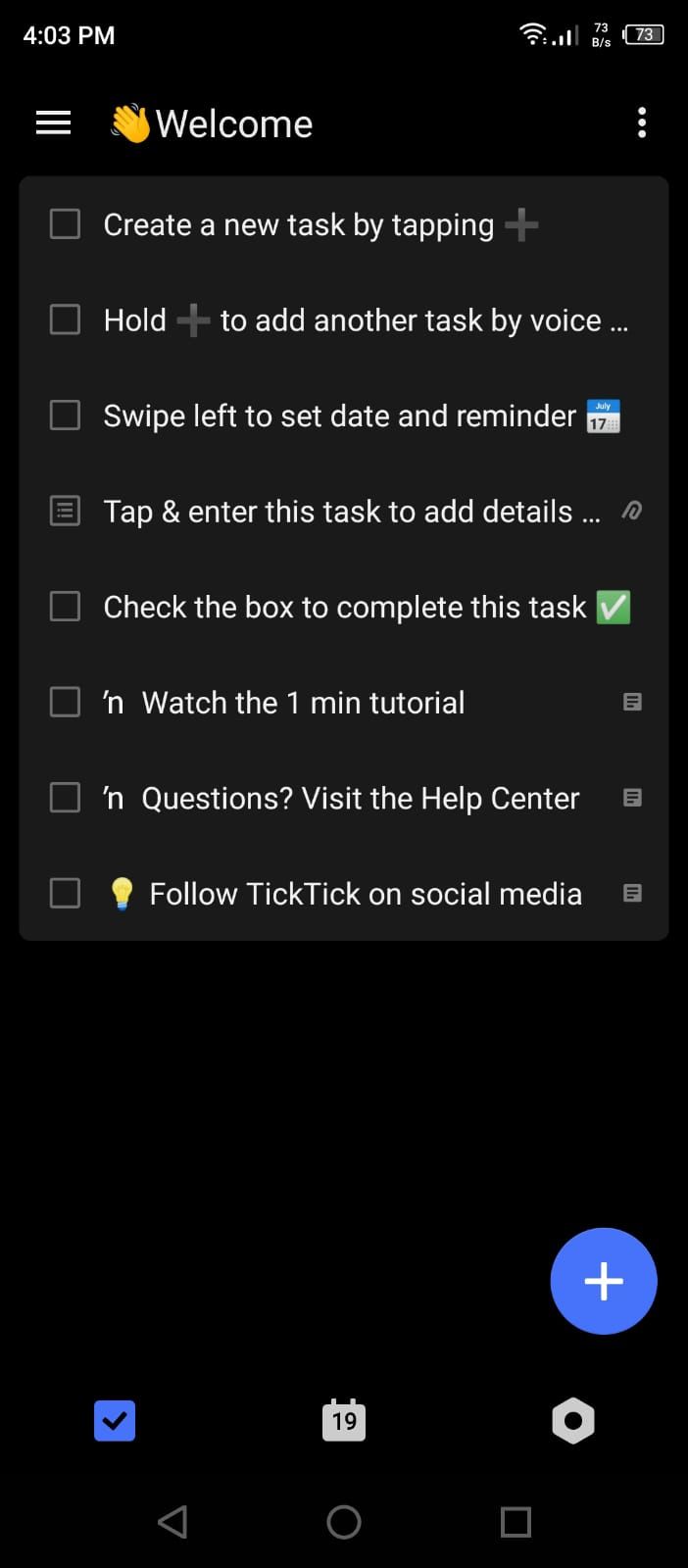
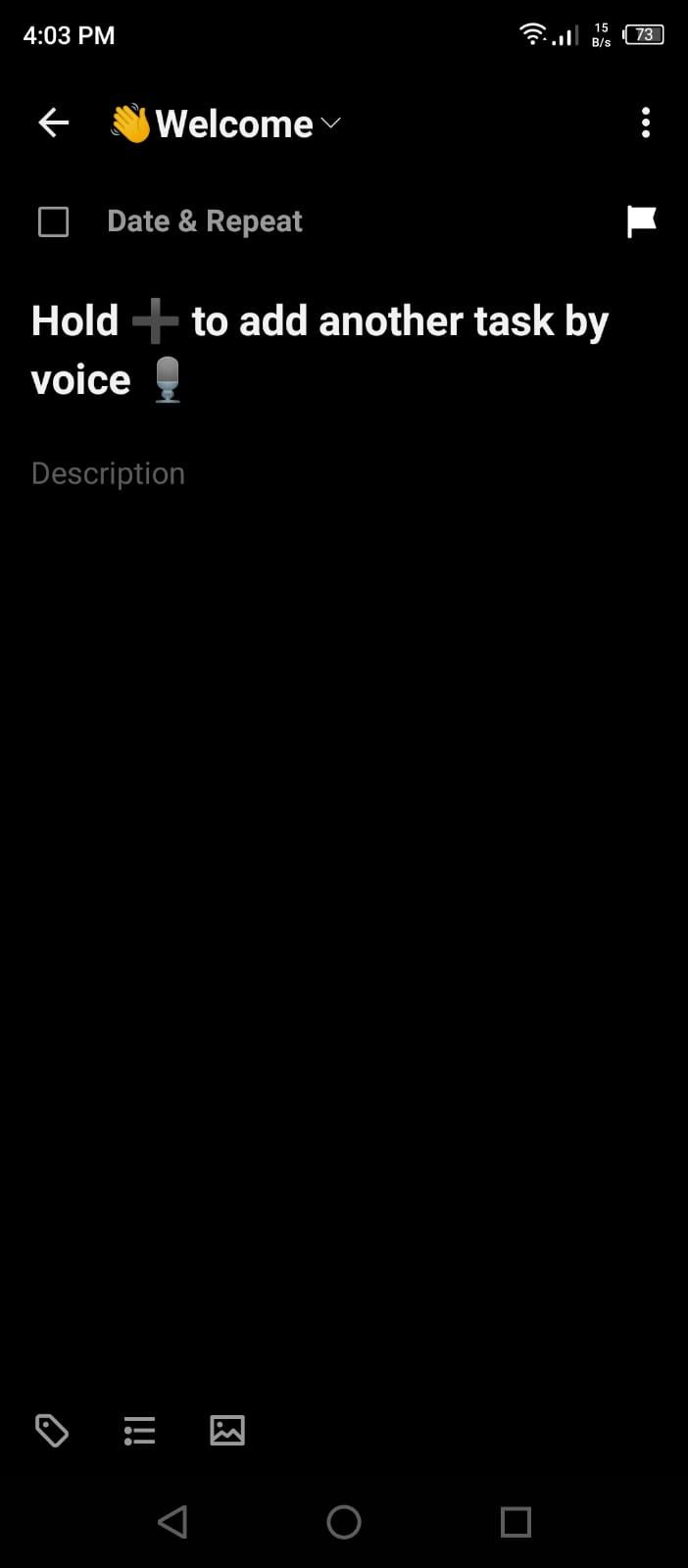
The interface isn't anything special, but that's precisely why it's great: it's immediately obvious that simplicity, readability, and usability are key to its design. And for a to-do app, nothing is more important than that.
TickTick employs a three-panel approach. The main panel shows the currently selected list and all the tasks therein. The left panel, opened by tapping the menu button at the top left, lets you switch between various lists. The right panel, opened by tapping on a particular task, shows more details and lets you edit various aspects of that task. More on that later.
The bottom of the main panel is where you add new tasks to the current list, and you can add new tasks using voice commands if you like. Overall, TickTick is smartly laid out and strikes the perfect balance between white space, color, navigability, and information access. Nothing is ever more than two or three taps away.
2. Smart Lists and Folders
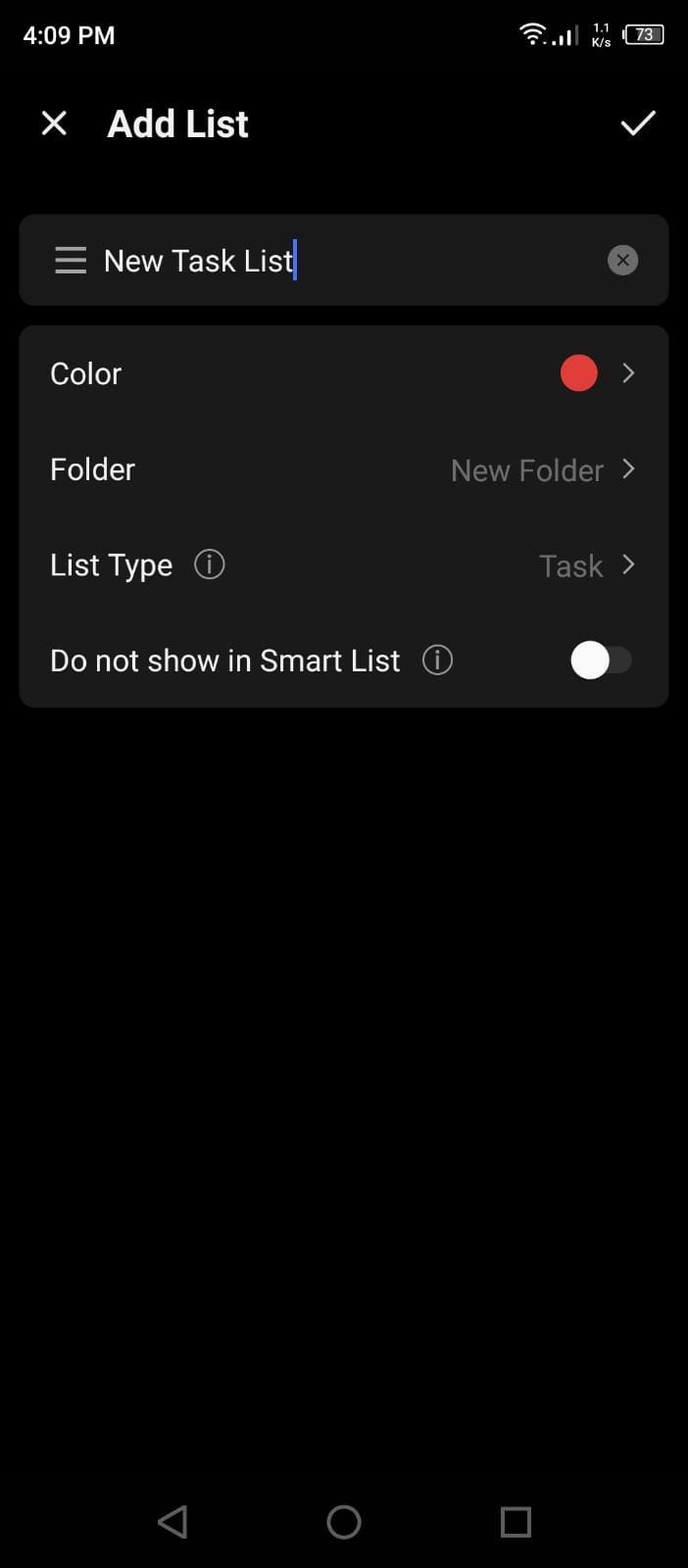
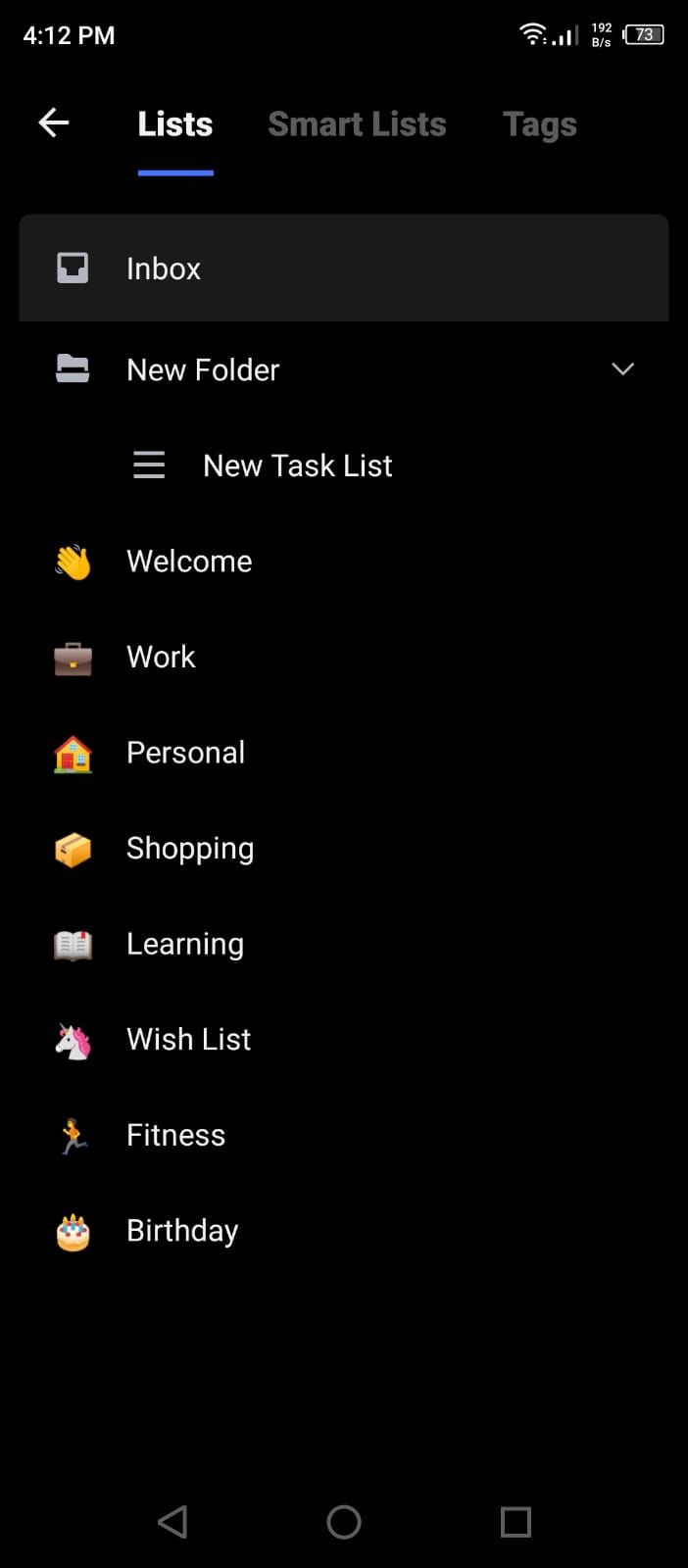
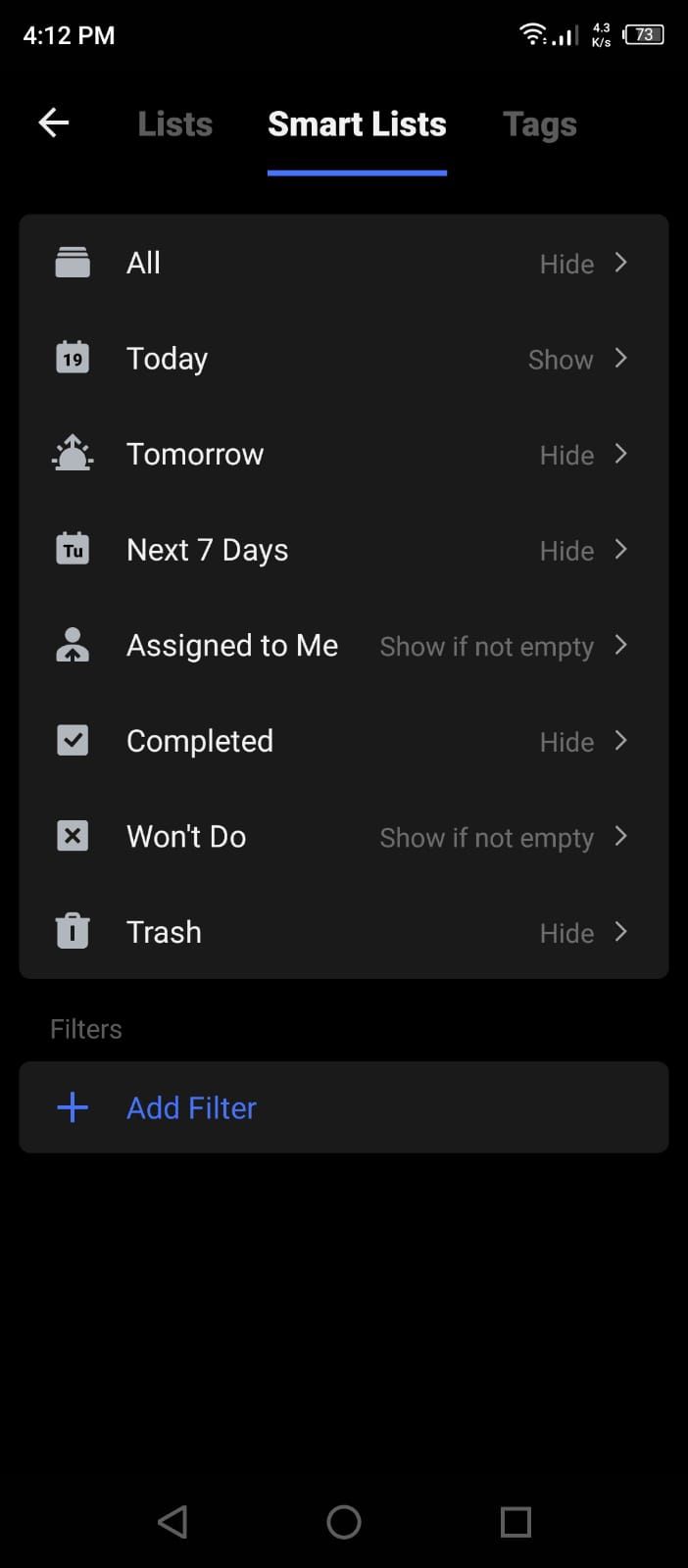
In TickTick, your individual tasks are organized by lists, and lists can be further organized into folders. This multi-level hierarchy is great for tracking different areas of your life in one single account. You might have folders for Work, Home, Hobbies, etc., and several lists for each.
Lists can be assigned colors, making it easy to know which one you're on at a glance.
TickTick also has a feature called Smart Lists, which are dynamic lists that filter all tasks across your entire account according to certain parameters. For example, the Next 7 Days smart list shows all tasks due within a week, while the Assigned to Me smart list only shows tasks that—you guessed it—have been assigned to you.
The provided Today smart list is excellent for staying on top of everything going on in your life, whether those tasks exist in your Work folder, your Home folder, your Church folder, etc. If you are not liking the feel of it, you can check out this list of best Android apps for managing to-do lists.
3. Notes, Comments, Attachments
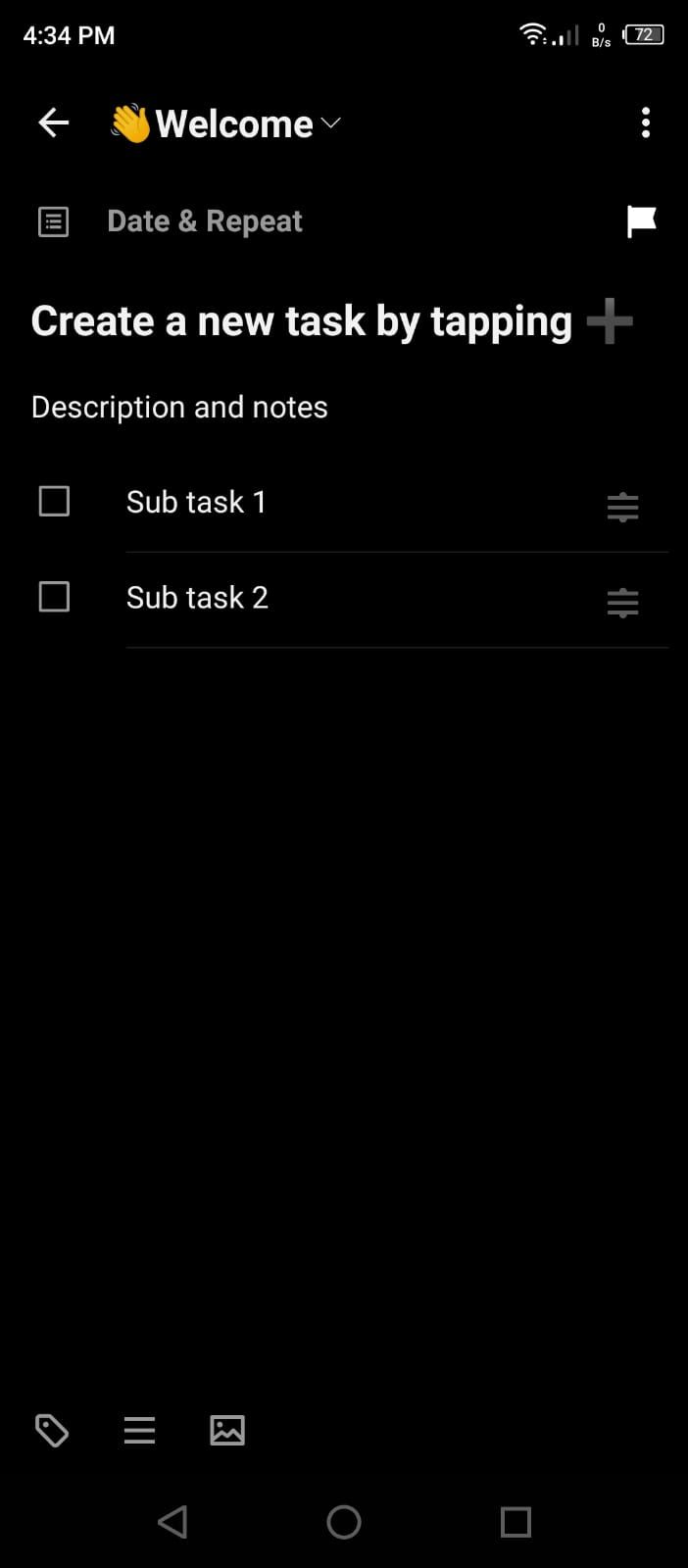
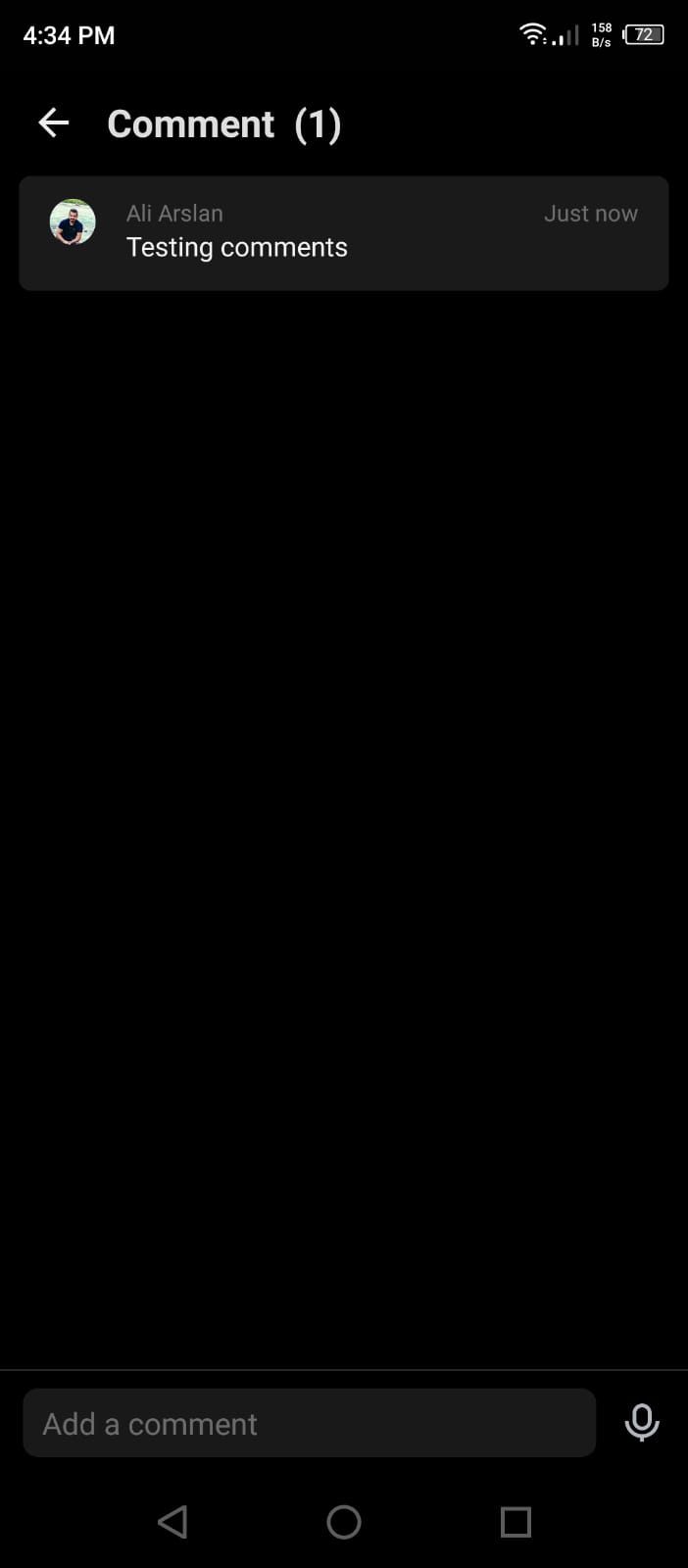
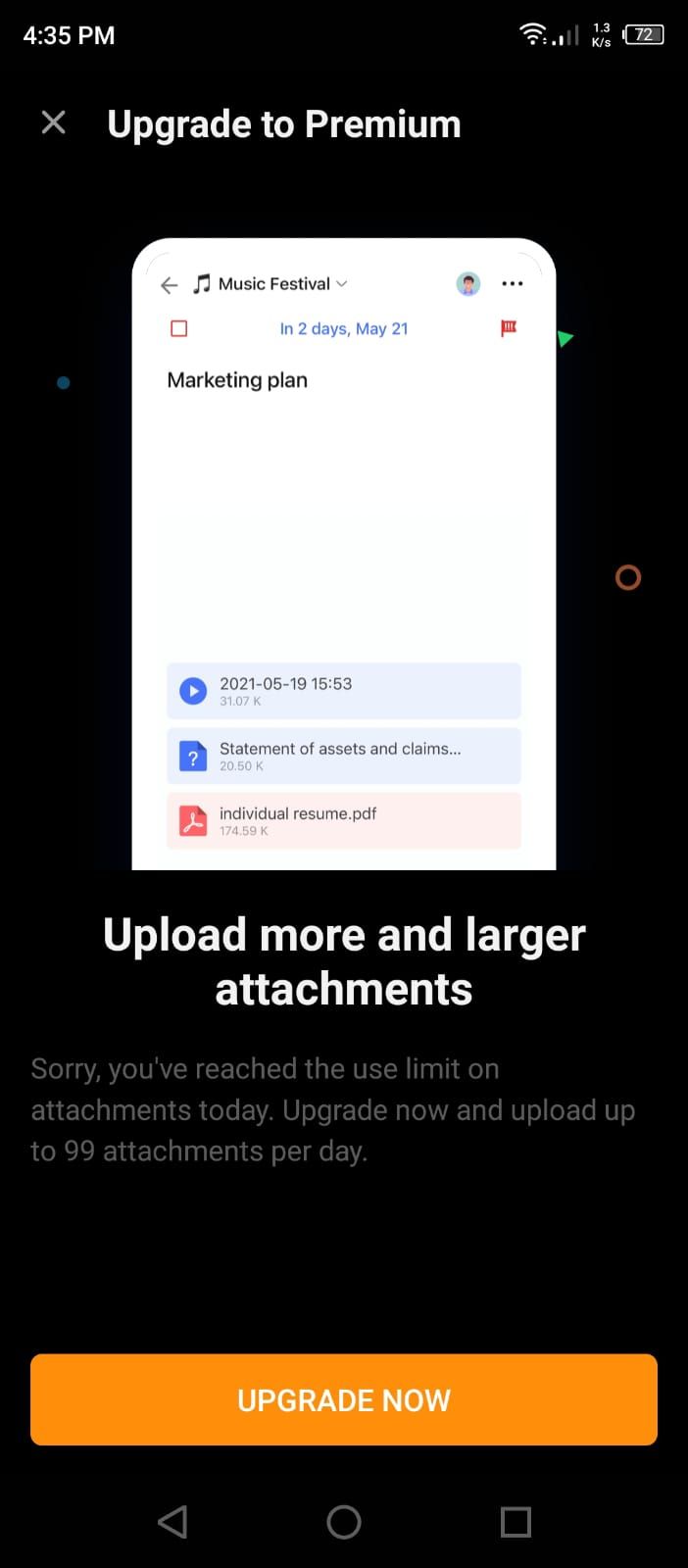
In addition to titles, every task can hold several kinds of extra information.
First, notes. Unlike most other to-do apps, TickTick actually lets you store notes for each task. There's an unlimited amount of space for this, and it's separate from comments. In comparison, a couple of other to-do apps allow for limited descriptions, but most only allow for short comments. Some, like Todoist, even restrict comments to a premium plan.
Notes can also be toggled into subtasks. When doing so, every line becomes a separate subtask, and subtasks are essentially checkboxes that you can mark as completed. Once all subtasks are finished, the task itself is marked as completed.
Second, comments. As if notes weren't more than enough, TickTick also supports user-based comments. These come in handy when collaborating on a task with others as a way to flesh out certain details or leave informational reminders.
Third, attachments. These can be files and documents, voice memos, uploaded photos, or direct camera shots. By attaching media and documents to a task, organizing external resources becomes much easier and headache-free. Unfortunately, you can't have more than one attachment as a free user.
You can also supplement your task management with these free apps for automating tasks on Android.
4. Sorting Tasks
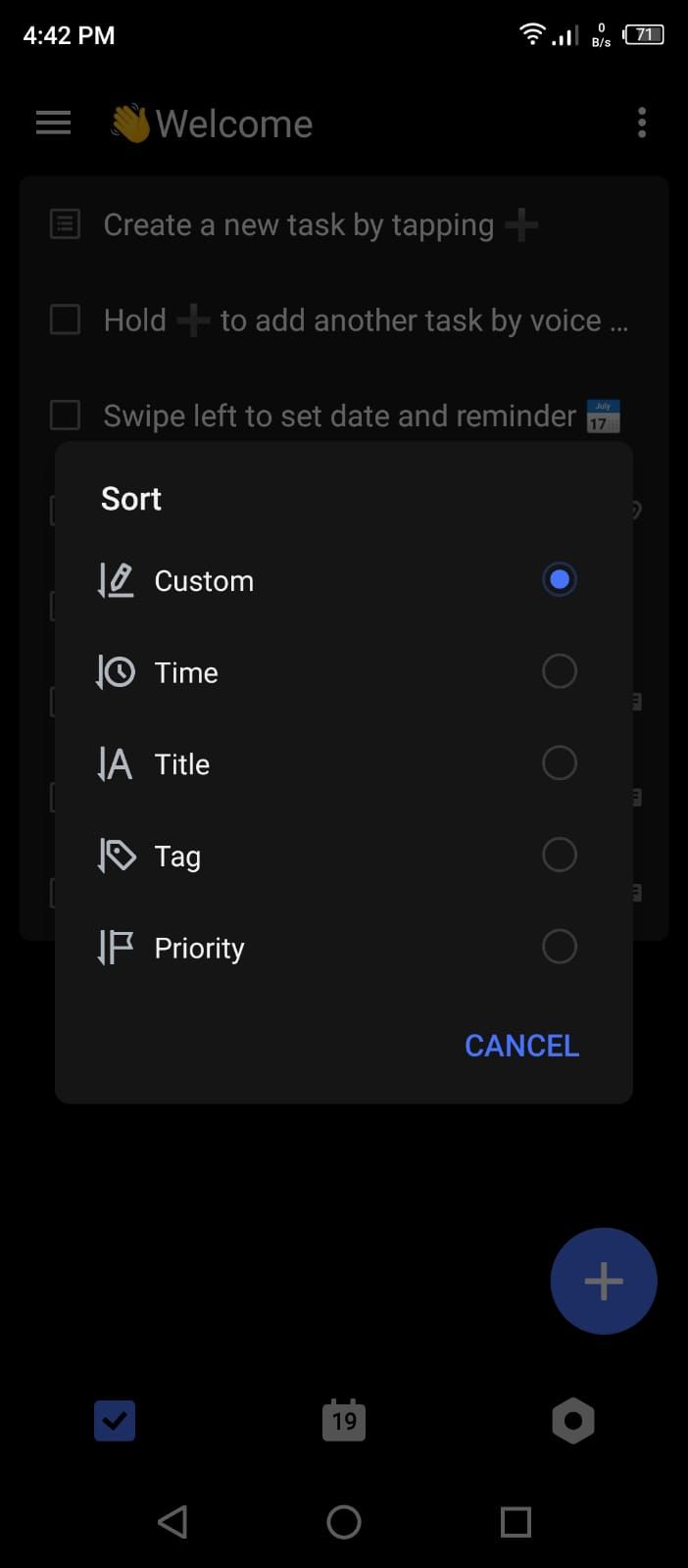
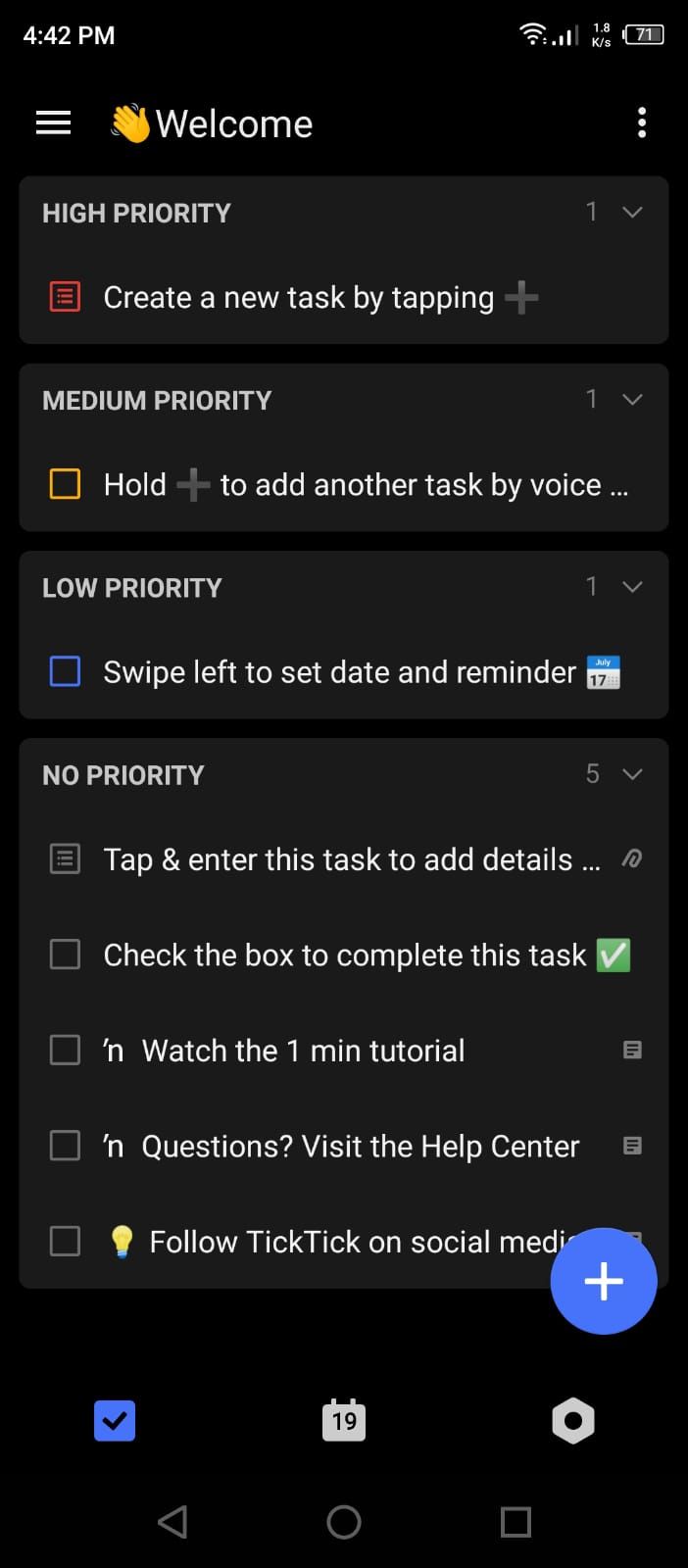
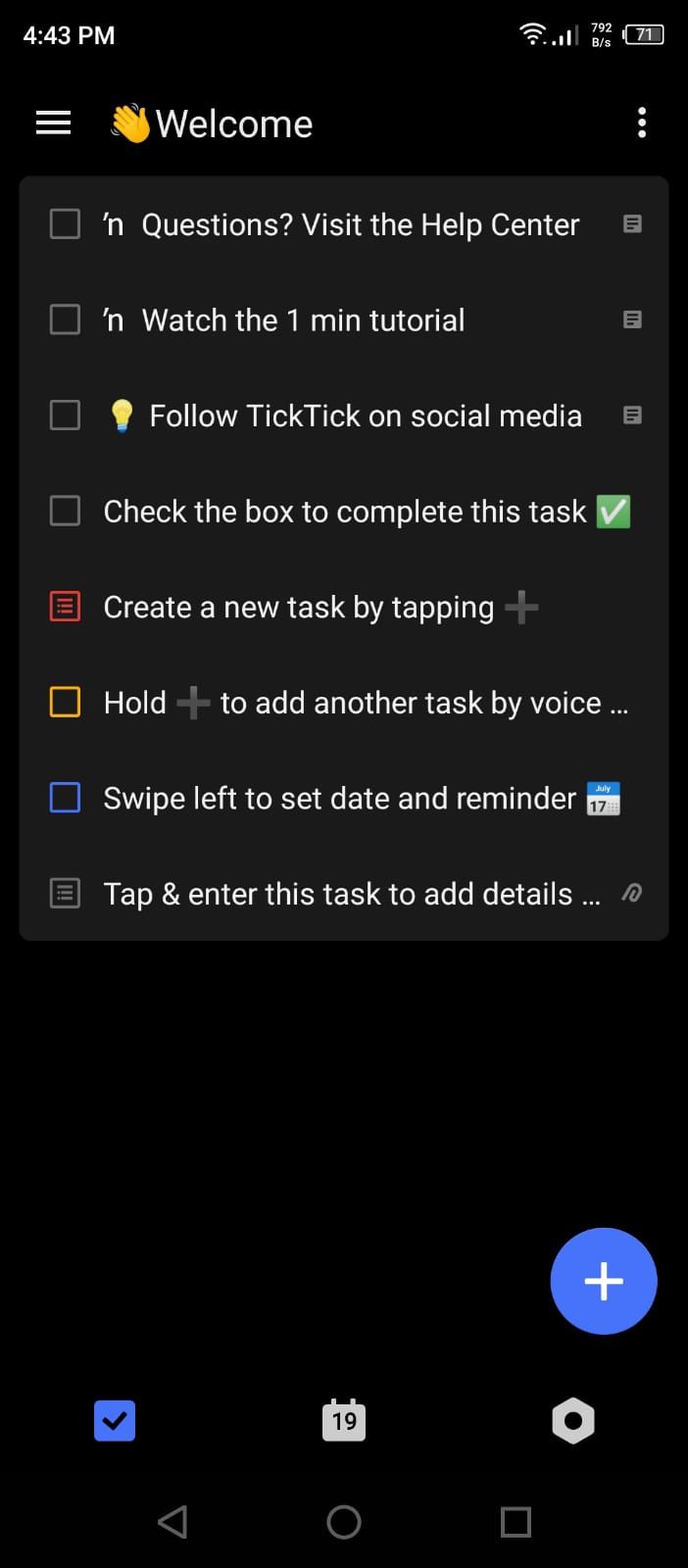
TickTick tasks do support priorities: None, Low, Medium, and High. These don't mean anything on their own, so use them however you want. You can use them as an extra organization tool: high-priority tasks as pinned references, medium-priority tasks as back-burner ideas, and low-priority tasks as ones you want to tackle next.
Lists have no sorting by default, but you can enable Priority Sorting to group tasks by priority. You can also choose to do Title Sorting (by alphabetical) or Time Sorting (by due date). If none of them appeal to you, go with Custom Sorting (drag and drop however you want).
If you are a student or a teacher, you might find these timetable apps for Android pretty useful.
5. Repeats and Reminders


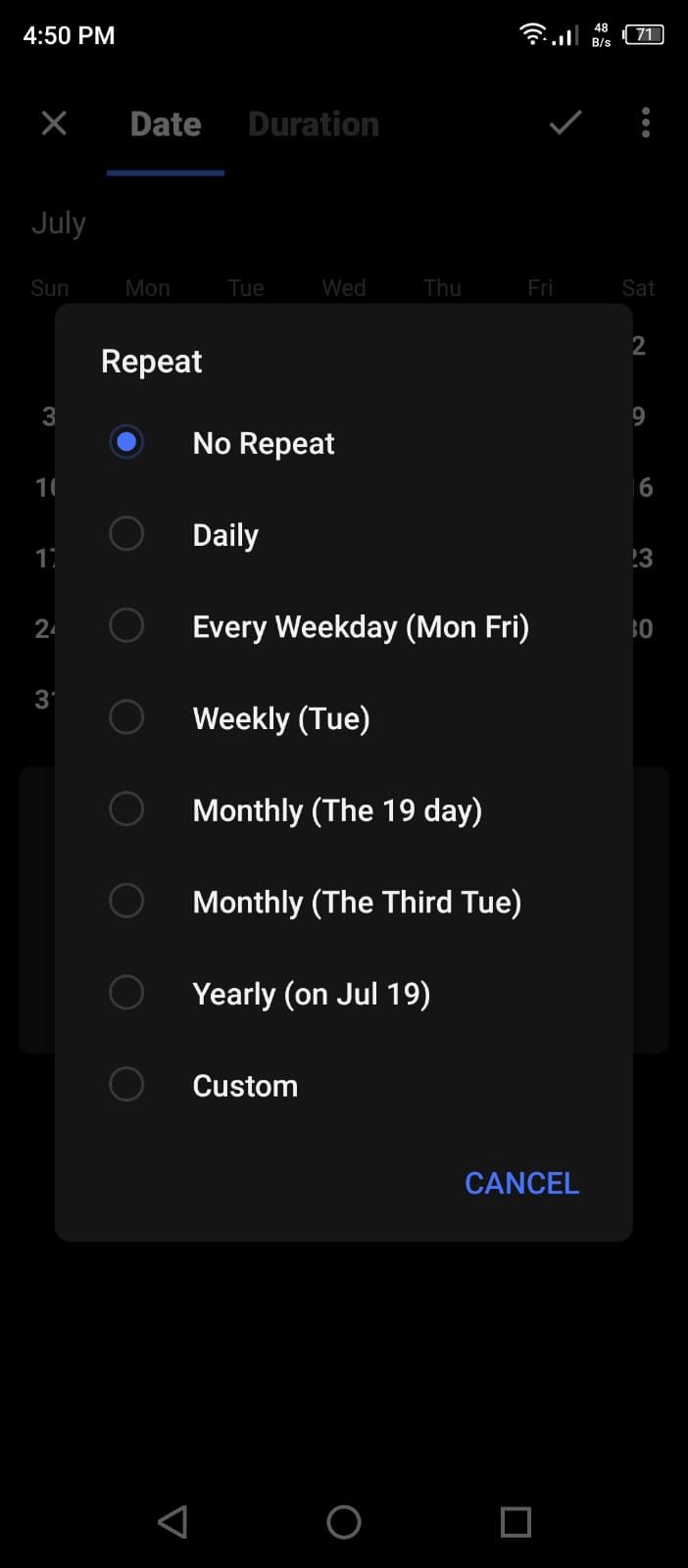
These two features might not be the most used ones in TickTick. However, it is good to have them there just in case.
If a task has a due date, you can set reminders for it. You can choose an "on the day" reminder or customize it to be anywhere from 1 Day to 60 Weeks before the due date. If no due time is set, it defaults to 9 am. If you do set a due time, more reminder options become available: anywhere from 1 Minute to 60 Hours before.
TickTick also has location reminders. Pick a location through Google Maps and select whether you want the reminder to trigger When You Arrive or When You Leave. This feature requires location services to be enabled.
Whether or not a task has a due date, you can set repeats for it. This automatically recreates the task at set intervals, so you can mark your "Grocery shopping" task as complete for today and have it reappear next week. Customization is flexible, allowing repeats for certain days of the week, every other week, etc. And you can set an end date for repeats!
One last helpful feature is the Daily Alert, which can be set in account settings. Pick a time of day (e.g., 9 am), and TickTick will push a notification at that time with all your tasks for today.
6. Premium Features
The features mentioned above are all available to free users. However, the free plan does come with some limitations that you may or may not be able to live with. Its premium plan costs $2.79/mo or $27.99/yr (about a 15% discount), which raises the limits to practically unlimited, really.
Here is a comparison of the free and the premium plan. The premium plan also comes with some useful extra features. Check out TickTick's official page to see what you get if you pay for it.
TickTick Is a Must-Try To-Do App for Android
But not everyone will love it. Maybe it's too simple for you, or maybe it's too advanced! Fortunately, there are all kinds of other to-do apps worth checking out if TickTick doesn't meet your needs or expectations.
The four big ones are Any.do, Todoist, Microsoft To Do, and Google Keep. If you prefer something simpler, a bullet-based to-do system like WorkFlowy or Dynalist may serve you better. And don't forget that true productivity is as much about removing unproductive apps!

